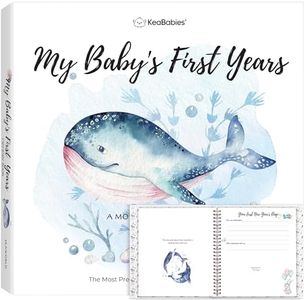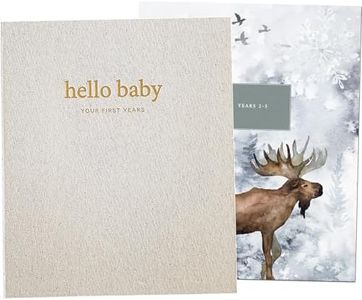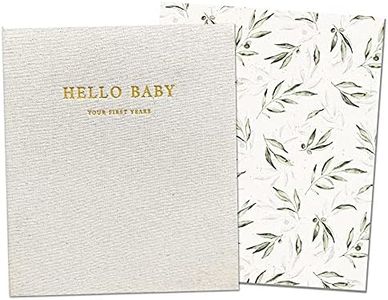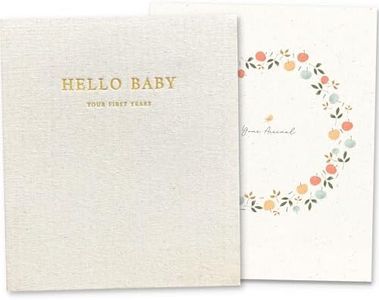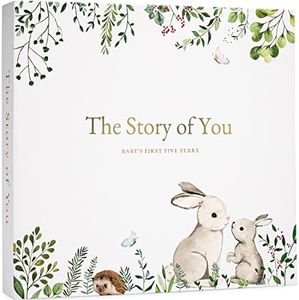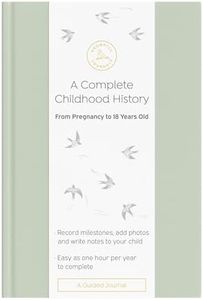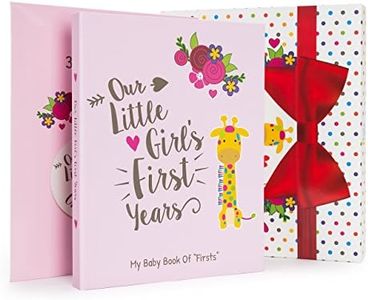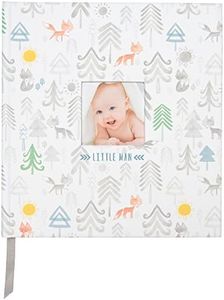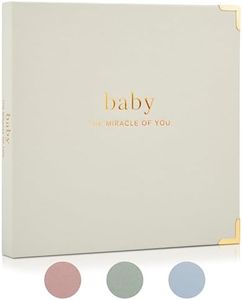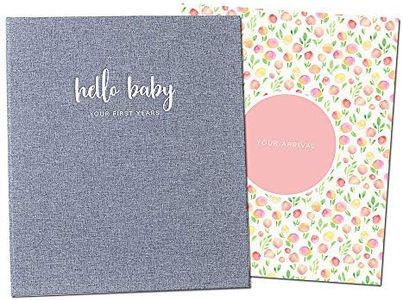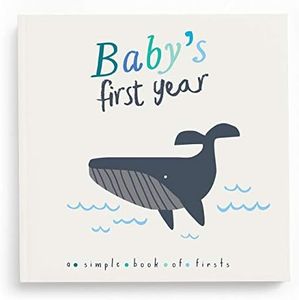We Use CookiesWe use cookies to enhance the security, performance,
functionality and for analytical and promotional activities. By continuing to browse this site you
are agreeing to our privacy policy
10 Best Baby Memory Books
From leading brands and best sellers available on the web.Buying Guide for the Best Baby Memory Books
Choosing a baby memory book is a lovely way to capture and preserve the special moments and milestones in your child’s early years. The right book can help you organize memories and photos so you can enjoy them for years to come. When picking a baby memory book, it's important to think about how you plan to use it, what types of memories you want to record, and how user-friendly you’d like the process to be. There are many styles and formats available, so a little bit of thought up front will help you select one that’s a great match for your family.Content StructureContent structure refers to how the book is organized—some books guide you step by step with prompts for each month or year, while others are more open-ended with blank or flexible pages. A book with structured prompts can be helpful if you want reminders of what to record, like first words, special holidays, or milestones. In contrast, an open design allows for more creativity and personalization but requires more effort in organizing entries. Consider your style: if you like following a template, look for structured books; if you prefer to write freely and add your own sections, an open or hybrid format may suit you better.
Page Quality and MaterialsThe quality of the pages and the materials used are important because you want a book that will last for years and protect your memories. Thicker, acid-free pages are most resistant to yellowing or tearing over time, and sturdy covers (like hardbacks or leatherette) give extra durability. If you plan to add photos, mementos, or write with markers, thicker pages prevent ink bleed-through and support heavier inserts. For basic journaling, thinner pages may be fine, but for lots of photos or decorations, choose heavy-duty paper.
Customization OptionsCustomization refers to how much you can personalize the memory book to fit your family's style or child’s unique journey. Some books offer spaces to add your baby’s name, family tree, or custom sections. The option to add handprints, locks of hair, or other mementos is also part of customization. Choose a high level of customization if you want the book to become a one-of-a-kind keepsake; if you prefer a quicker, guided method, less customization may be simpler to maintain.
Photo and Memorabilia CapacityThis spec deals with how many photos, cards, or mementos the book can hold. Some memory books have designated slots or envelopes for keepsakes, while others have adhesive or pockets for sticking in extras. If you want to include many photos or special items, look for books specifically designed with lots of space and holders. If you mostly want to write, capacity is less important. Match the book's storage features with how many extra items you plan to save.
Design and StyleMemory books come in many designs, including modern, classic, whimsical, and gender-neutral themes. The design is important because you’ll want to look back at it often and maybe display it on a shelf. Consider whether you prefer simple, elegant styles or more colorful, playful designs. Choose what appeals to your taste and represents your family, as this will make filling out the book feel more special.
Ease of UseEase of use means how simple it is to fill out the book and keep it updated. Some books are laid out so you can quickly write short notes and stick in photos, while others may have more complex layouts or require more time to keep up with. If you’re busy or tend to forget to record memories, pick a book that isn’t too complicated and is easy to open and make quick entries. If you enjoy scrapbooking or crafting, a more detailed book might be satisfying.
